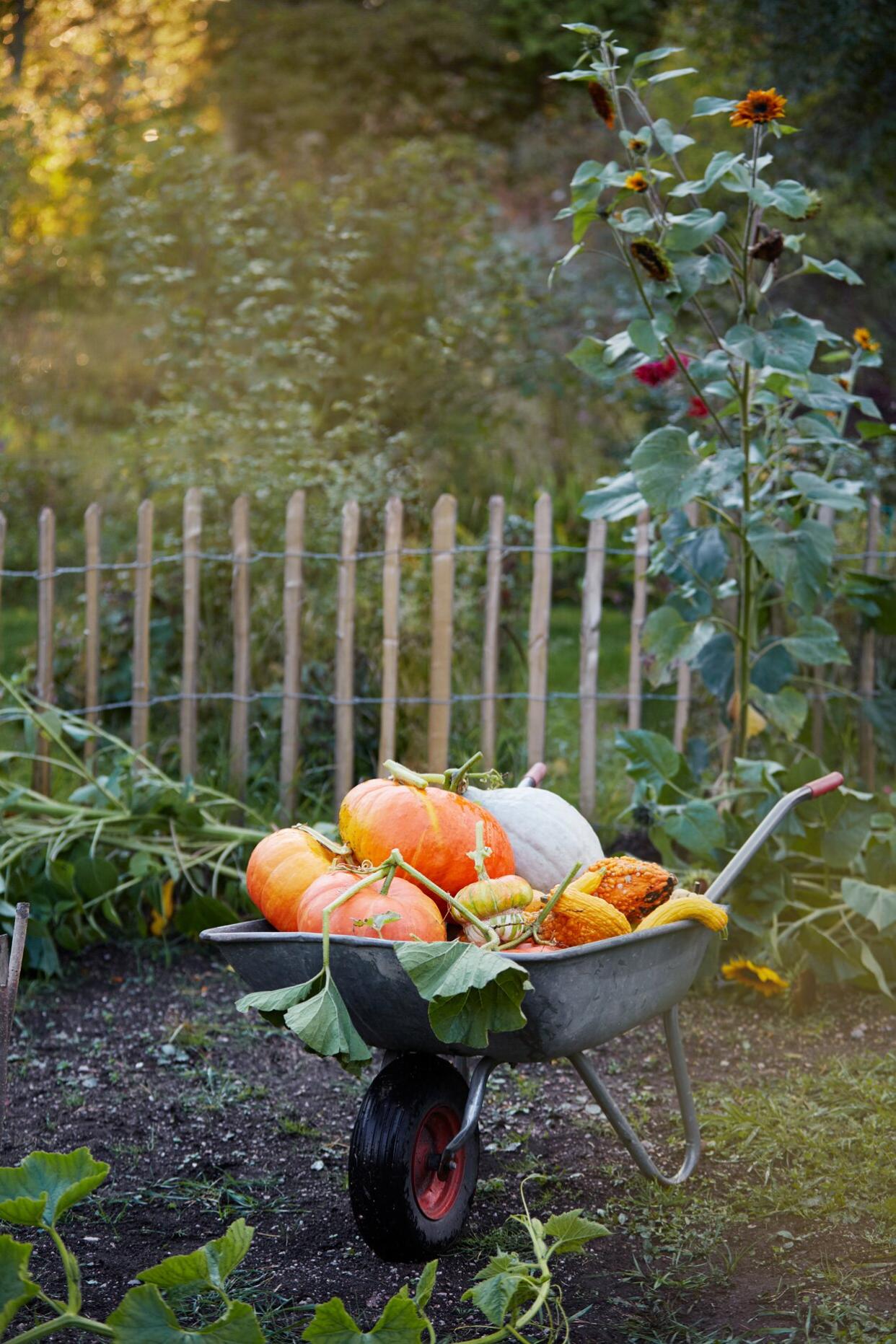Here's How to Grow Pumpkins at Home—and Save Their Seeds for Future Plantings

Getty / Johner Images
TABLE OF CONTENTS
On This Page
Starting from Seed
How to Grow
When to Harvest
Saving Seeds
There is nothing quite like picking fresh fruits and vegetables from your garden. That goes for pumpkins, as well. Growing your own pumpkins means you'll have plenty of squash to make pies and other autumnal dishes, and even plenty left over for jack-o'-lanterns. So, what do you really need to know about growing these fall favorites at home? Here, Adrienne R. Roethling, the director of curation and mission delivery at Paul J. Ciener Botanical Garden, gives her best advice.
Related: How to Grow and Harvest Lettuce at Home
Start from Seed
According to Roethling, it's always best to start pumpkins from seed as opposed to buying plants from the garden center. "I think timing wise, you have more control," she says. You can purchase seeds ahead of time (or save them from the prior year's harvest) and keep them in your refrigerator until it's time to sow—and pick up seeds for several companion plants while you're at it. "I would also recommend putting a cutting flower garden nearby to help introduce the pollinators," suggests Roethling.
How to Grow Pumpkins
Plant in Full Sun
Once it's time to plant your seeds, you'll want to sow them in an area that receives full sun. "When you sow the seeds, sprinkle some diatomaceous earth (DE) to deter critters from eating newly emerging stems," she says, adding that you should continue to spread it around your plants as they grow. "Vining vegetables are prone to squash borers and applying DE is like applying shards of glass for crawling insects."
Water and Fertilize Sprouts
Once they begin to sprout, water them in the morning to avoid the powdery mildew or rust buildup on the leaves. And since pumpkins are seasonal, you may need to give them a little extra care, Roethling says, which means applying a fertilizer during the growing season.
When to Harvest Pumpkins
If you want to be able to harvest pumpkins by Halloween, Roethling suggests getting them into the ground by June. As for how long it takes to grow a pumpkin? "On average, pumpkins take 100 to 110 days to harvest," she says. "I would recommend early June to sow seeds. They should be ready any time throughout the month of October."
How to Save Pumpkin Seeds for Future Plantings
Don't dispose of your seeds after your harvest—some can be saved for roasting, while others (a handful or so) should be reserved for future plantings.
Extract the Seeds
Sonya Harris, the founder and CEO of The Bullock Garden Project, Inc., says to extract them by cutting the gourd lengthwise and using a spoon to scoop them out. If you're carving a Halloween Jack-o'-Lantern, cut the top off and use your hands to remove seeds first. Follow these steps after you separate the seeds from the gourd.
After extracting the seeds (aka pepitas), Harris says to put them into a colander pan and rinse with tepid water.
Use your hands to remove any pulp, which can cause mold to develop and ruin your batch.
Once the seeds are clean, place unbleached coffee filters over a cookie sheet and lay the seeds over the filters in one layer, notes Harris.
Then, place the tray in a space where your goods can dry, turning them over after a few days to prevent rot.
Save the Largest Seeds Only
Harris recommends saving half of the pepitas (she keeps some for her own garden and uses the rest at seed swaps or donations) you dry. "I save the largest, healthiest looking seeds in my collection. In my experience, these seeds have always grown well for me the next season," she says.
How to Store Your Seeds
After you take your pick, place seeds in envelopes in groups of 10; label them with the seed name, type, and the packaging date. "Take notes about each item you're saving seeds from," Harris says. "The more information you have regarding that seed, the bigger and better your vegetables will be during the season to come." Lastly, place the envelopes into a photo box, which should be stored in a cool, dry area until it's time to start the growing cycle all over again.

